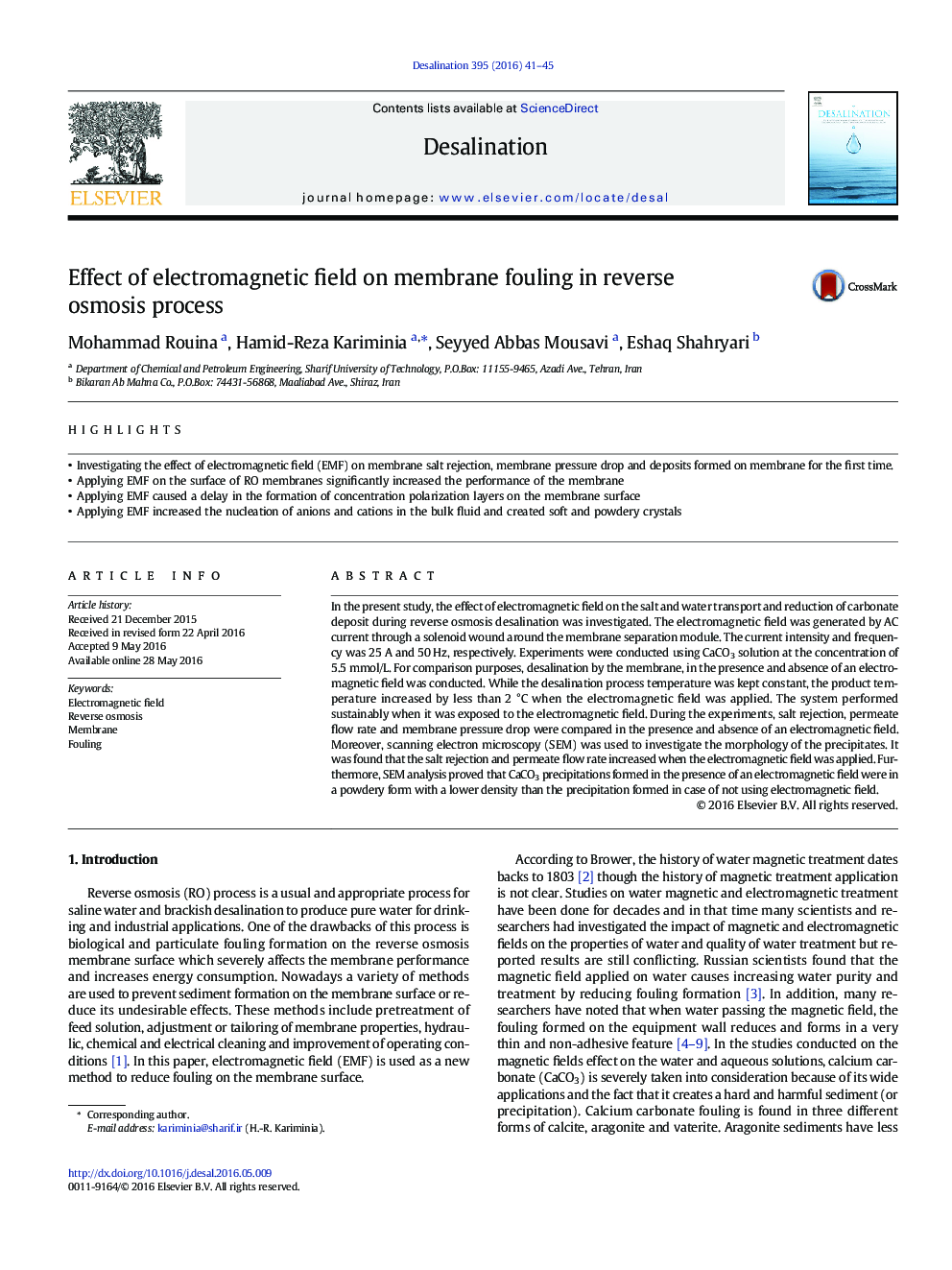| Article ID | Journal | Published Year | Pages | File Type |
|---|---|---|---|---|
| 622668 | Desalination | 2016 | 5 Pages |
•Investigating the effect of electromagnetic field (EMF) on membrane salt rejection, membrane pressure drop and deposits formed on membrane for the first time.•Applying EMF on the surface of RO membranes significantly increased the performance of the membrane•Applying EMF caused a delay in the formation of concentration polarization layers on the membrane surface•Applying EMF increased the nucleation of anions and cations in the bulk fluid and created soft and powdery crystals
In the present study, the effect of electromagnetic field on the salt and water transport and reduction of carbonate deposit during reverse osmosis desalination was investigated. The electromagnetic field was generated by AC current through a solenoid wound around the membrane separation module. The current intensity and frequency was 25 A and 50 Hz, respectively. Experiments were conducted using CaCO3 solution at the concentration of 5.5 mmol/L. For comparison purposes, desalination by the membrane, in the presence and absence of an electromagnetic field was conducted. While the desalination process temperature was kept constant, the product temperature increased by less than 2 °C when the electromagnetic field was applied. The system performed sustainably when it was exposed to the electromagnetic field. During the experiments, salt rejection, permeate flow rate and membrane pressure drop were compared in the presence and absence of an electromagnetic field. Moreover, scanning electron microscopy (SEM) was used to investigate the morphology of the precipitates. It was found that the salt rejection and permeate flow rate increased when the electromagnetic field was applied. Furthermore, SEM analysis proved that CaCO3 precipitations formed in the presence of an electromagnetic field were in a powdery form with a lower density than the precipitation formed in case of not using electromagnetic field.
